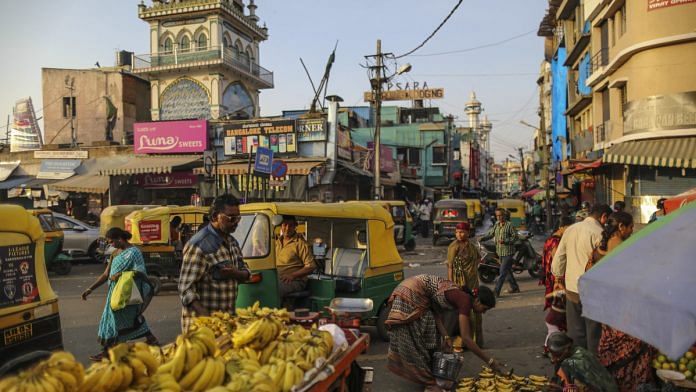New Delhi: Retail inflation eased to a 16-month low of 4.06 per cent in January mainly on account of softening of food and vegetable prices, government data showed on Friday.
It is for the second consecutive month that retail inflation based on the Consumer Price Index (CPI) has remained within the target range of RBI which is 4 per cent (+/-2 per cent).
The retail inflation stood at 4.59 per cent in December 2020 and 7.59 per cent in January 2020. The previous low for retail inflation was in September 2019 at 4 per cent.
The rate of price rise in the food basket was 1.89 per cent in January this year, significantly down from 3.41 per cent in December, revealed the data released by the National Statistical Office (NSO).
“Driven by a fairly broad-based moderation in the food inflation, the CPI inflation in January 2021 softened appreciably to a 16-month low…
“Food prices have displayed a mixed trend so far in February 2021. The rise in onion prices, as well as higher crude oil prices and their transmission into retail fuel prices are areas of concern that need to be monitored,” said Aditi Nayar, principal economist, ICRA.
Vegetable prices showed further decline during the month with a negative inflation print of 15.84 per cent, while that of pulses and products eased to 13.39 per cent. Inflation in vegetable was (-)10.41 per cent and pulses and products at 15.98 per cent in the preceding month (December 2020).
Likewise, protein rich ‘meat and fish’, eggs and ‘milk and products’ witnessed softening of inflation at 12.54 per cent, 12.85 per cent and 2.73 per cent, respectively.
The rate of price rise in ‘fuel and light’ category, however, picked up to 3.87 per cent as against 2.99 per cent.
Nayar also said in an uncomfortable trend, many of the non-food categories recorded a rise in inflation in January 2021, with inflation expected to resume an uptrend in February-March 2021.
“We do not think that today’s softer-than-anticipated print creates the room for an imminent rate cut. If the pace of growth in Q4 FY2021 exceeds the prevailing tepid expectations, the stance may be revised to neutral in the June 2021 MPC review,” she opined.
Earlier this month, the Reserve Bank lowered the retail inflation projection for the ongoing quarter of this fiscal at 5.2 per cent, saying it has returned within the “tolerance band”.
The regulator expects retail inflation to be around 5.2-5 per cent in the first half of next fiscal year before easing further to 4.3 per cent in Q3 FY22.
“The inflation rate has come well below the RBI’s threshold rate, and this actually gives some relief to the markets on the immediate trajectory of interest rates. However, core inflation is perched at 5.70 per cent, something that may take more time to move down,” said Joseph Thomas, Head of Research – Emkay Wealth Management.
Deepak Agarwal, co-founder, Moneyboxx Finance Ltd, said with inflation falling for the second consecutive month and hovering within the RBI range, the softer rate regime would continue in the near future.
This will help in faster and sustained economic recovery, he added.
Sreejith Balasubramanian, Economist – Fund Management, IDFC AMC, said going forward, the base effect which helped recent lower prints will wane in February and March and the magnitude of disinflation in vegetables would also most likely ease, while the price movement in pulses and vegetable oils needs to be watched closely.
The RBI mainly factors in the retail inflation while arriving at its monetary policy. The government has mandated the central bank to ensure the inflation remains at 4 per cent, with a margin of 2 per cent on either side.
Price data are collected from selected towns and selected villages by the Field Operations Division of NSO, Ministry of Statistics and Programme Implementation.
Also read: How RBI’s ‘Retail Direct’ can open the door to India’s own Bitcoin-like digital currency







With Covid lockdown, demand was down and hence inflation was low. What has RBI got to do with it??? Put in a word wherever you can pay well, does it???